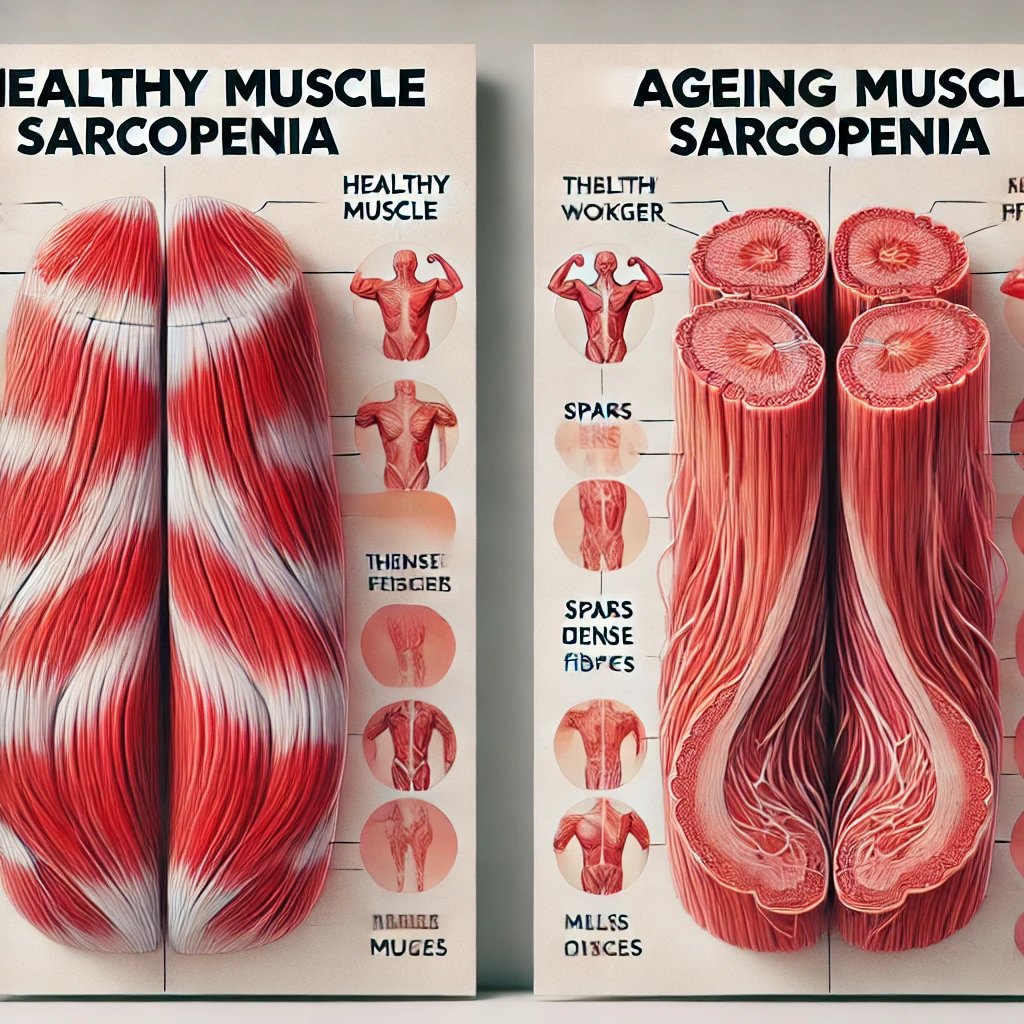SARCOPENIA: THE SILENT MUSCLE THIEF IN AGEING AND CANCER RECOVERY–AND WHAT YOU CAN DO ABOUT IT

As we age, most of us expect to slow down a little. But what about if that slowing down is more about muscle loss than simply getting older? Sarcopenia, often called the “silent muscle thief”, is a condition many people have not heard of– but it is something we all need to understand, and even more important if we are recovering from cancer or surgery.
What is Sarcopenia?
Sarcopenia is the age-related loss of muscle mass, strength and performance. It typically begins in our 40’s and 50’s and speeds up if we are not moving enough, eating well, or engaging in regular strength-building exercise. For people undergoing or recovering from cancer treatment, the risk can be even greater.
Sarcopenia shows as decreased levels of muscle, strength, muscle quality and physical performance, this kind of degeneration can affect the ability to carry out functional daily activities. Sarcopenia is also strongly associated with greater incidence of falls and increased risk of fracture. (Andrew D Ardeljan et al).
Studies show that Sarcopenia is twice as common in individuals with cancer compared to the general population (Salvatore Lavalle et al). Chemotherapy, radiation, hormone treatments, and surgery often lead to reduced physical activity, fatigue, and weight changes– all of which contribute to muscle wasting (Prado et al)
Why Should We Care?
Muscle isn’t just there to look “ripped” and toned, and help you lift things. It plays a vital role:
• Balance and Falls Prevention
• Maintaining Your Independence
• It Helps with Metabolism and Weight Management
• It will Help You Recover from illness and Surgery
• It Supports Your Bone Health
• And in Cancer Recovery, Low Muscle Mass can even Affect how Well You Tolerate Treatment and Bounce Back Afterwards!
What Can We Do About It?
It’s never too late to start rebuilding strength and maintaining muscle.
• Keep Moving, Move More – Gentle, progressive strength training is key. Pilates, use resistance bands, light weights and even your own bodyweight to build strength and tone. Remember to work your feet, keep them mobile and strong, and strengthen your legs. Movement really is medicine.
• Eat Well – Protein is crucial for muscles. Aim to include some at each meal.
• Balance and Flexibility are also important – Exercise to improve your balance will reduce your risk of falling. Working on your flexibility will help you move better and feel less stiff, it will feel easier to move, and it will help protect your joints.
• Breathe and Rest – Fatigue is common in cancer recovery, so take it easy, balance your movement sessions with restorative relaxation sessions can help. Breathing techniques and guided relaxation can help improve energy levels and support recovery.
If you are unsure where to start, this is exactly what we work on in my 6-week cancer recovery and well-being programmes–helping you to move safely, rebuild strength, and feel empowered.
Please get in touch to book your place or find out more
fi@therapyinmotion.co or call 07767 384983
Further reading
Unveiling the Intricate Dance: How Cancer Orchestrates Muscle Wasting and Sarcopenia –
Sarcopenia – Continuing education – Stat Pearls National Library of Medicine
